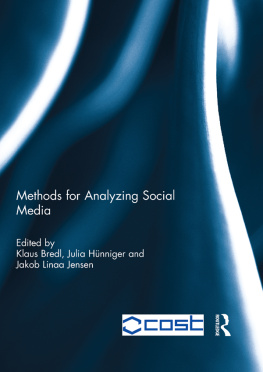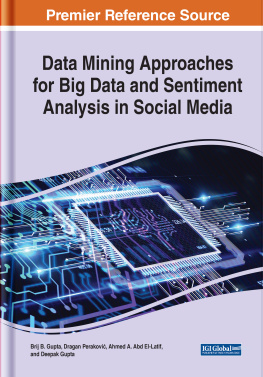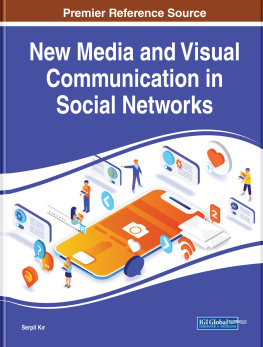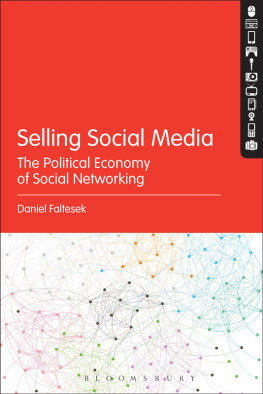Methods for Analyzing Social Media
Social media is becoming increasingly attractive for users. It is a fast way to communicate ideas and a key source of information. It is therefore one of the most influential mediums of communication of our time and an important area for audience research. The growth of social media invites many new questions such as: How can we analyze social media? Can we use traditional audience research methods and apply them to online content? Which new research strategies have been developed? Which ethical research issues and controversies do we have to pay attention to? This book focuses on research strategies and methods for analyzing social media and will be of interest to researchers and practitioners using social media, as well as those wanting to keep up to date with the subject.
This book was originally published as a special issue of the Journal of Technology in Human Services.
Klaus Bredl, Dr. phil., is Professor at the Department of Media and Educational Technology at the University of Augsburg, Germany. His research interests include activity streams, immersion and methodological approaches to studies of new technologies in communication and education. He has worked and published in the fields of technology enhanced learning, social media, knowledge communication and competence development. He is Vice-Task-Force-Leader on the topic within the European COST Action Transforming Audiences, Transforming Societies.
Julia Hnniger, MA, is Research Assistant at the Department of Media and Educational Technology at the University of Augsburg, Germany. From 2009 to 2010 she was a consultant for e-learning at the Georg Simon Ohm University of Applied Sciences, Nuremberg, Germany. Her research interests include computer-mediated communication and the psychology of the internet and how it affects mental health. She is YECREA representative for the Audience and Reception Studies Section.
Jakob Linaa Jensen, PhD, is Associate Professor at the Department of Aesthetics and Communication, Media Studies and the Center for Internet Studies at the University of Aarhus, Denmark. His research interests include democratic participation online, social media use and online methodologies. He is leading a European taskforce on methodological approaches to studies of social media.
Methods for Analyzing Social Media
Edited by
Klaus Bredl, Julia Hnniger and Jakob Linaa Jensen
First published 2014
by Routledge
2 Park Square, Milton Park, Abingdon, Oxon, OX14 4RN
Simultaneously published in the USA and Canada
by Routledge
711 Third Avenue, New York, NY 10017
Routledge is an imprint of the Taylor & Francis Group, an informa business
2014 Taylor & Francis
All rights reserved. No part of this book may be reprinted or reproduced or utilised in any form or by any electronic, mechanical, or other means, now known or hereafter invented, including photocopying and recording, or in any information storage or retrieval system, without permission in writing from the publishers.
Trademark notice: Product or corporate names may be trademarks or registered trademarks, and are used only for identification and explanation without intent to infringe.
British Library Cataloguing in Publication Data
A catalogue record for this book is available from the British Library
ISBN13: 978-0-415-81832-2
Typeset in Garamond
by Taylor & Francis Books
Publishers Note
The publisher accepts responsibility for any inconsistencies that may have arisen during the conversion of this book from journal articles to book chapters, namely the possible inclusion of journal terminology.
Disclaimer
Every effort has been made to contact copyright holders for their permission to reprint material in this book. The publishers would be grateful to hear from any copyright holder who is not here acknowledged and will undertake to rectify any errors or omissions in future editions of this book.
Acknowledgement
 |  |
| http://www.cost.eu | http://www.cost-transforming-audiences.eu |
This publication is supported by COST.
COST the acronym for European Cooperation in Science and Technology is the oldest and widest European intergovernmental network for cooperation in research. Established by the Ministerial Conference in November 1971, COST is presently used by the scientific communities of 36 European countries to cooperate in common research projects supported by national funds.
The COST Action IS0906 Transforming Audiences, Transforming Societies (20102014) is coordinating research efforts into the key transformations of European audiences within a changing media and communication environment, identifying their complex interrelationships with the social, cultural and political areas of European societies. A range of interconnected New media genres, media literacy and trust in the media; (2) Audience interactivity and participation; (3) The role of media and ICT use for evolving social relationships; and (4) Audience transformations and social integration.
| Published with the additional support of |  |
Contents
Klaus Bredl, Julia Hnniger, and Jakob Linaa Jensen
Fabio Giglietto, Luca Rossi, and Davide Bennato
Axel Bruns and Stefan Stieglitz
Pascal Jrgens
Tim Highfield
Stine Lomborg
Marco Lnich, Patrick Rssler, and Lena Hautzer
Andra Siibak, Michael Forsman, and Patrik Hernwall
Matthew Crick
Tara La Rose
Martine P. A. Bouman, Constance H. C. Drossaert, and Marcel E. Pieterse
The chapters in this book were originally published in the Journal of Technology in Human Services, volume 30, issue 34 (2012). When citing this material, please use the original page numbering for each article, as follows:
Chapter 1
Methods for Analyzing Social Media: Introduction to the Special Issue
Klaus Bredl, Julia Hnniger, and Jakob Linaa Jensen
Journal of Technology in Human Services, volume 30, issue 34 (2012) pp. 141144
Chapter 2
The Open Laboratory: Limits and Possibilities of Using Facebook, Twitter, and YouTube as a Research Data Source
Fabio Giglietto, Luca Rossi, and Davide Bennato













